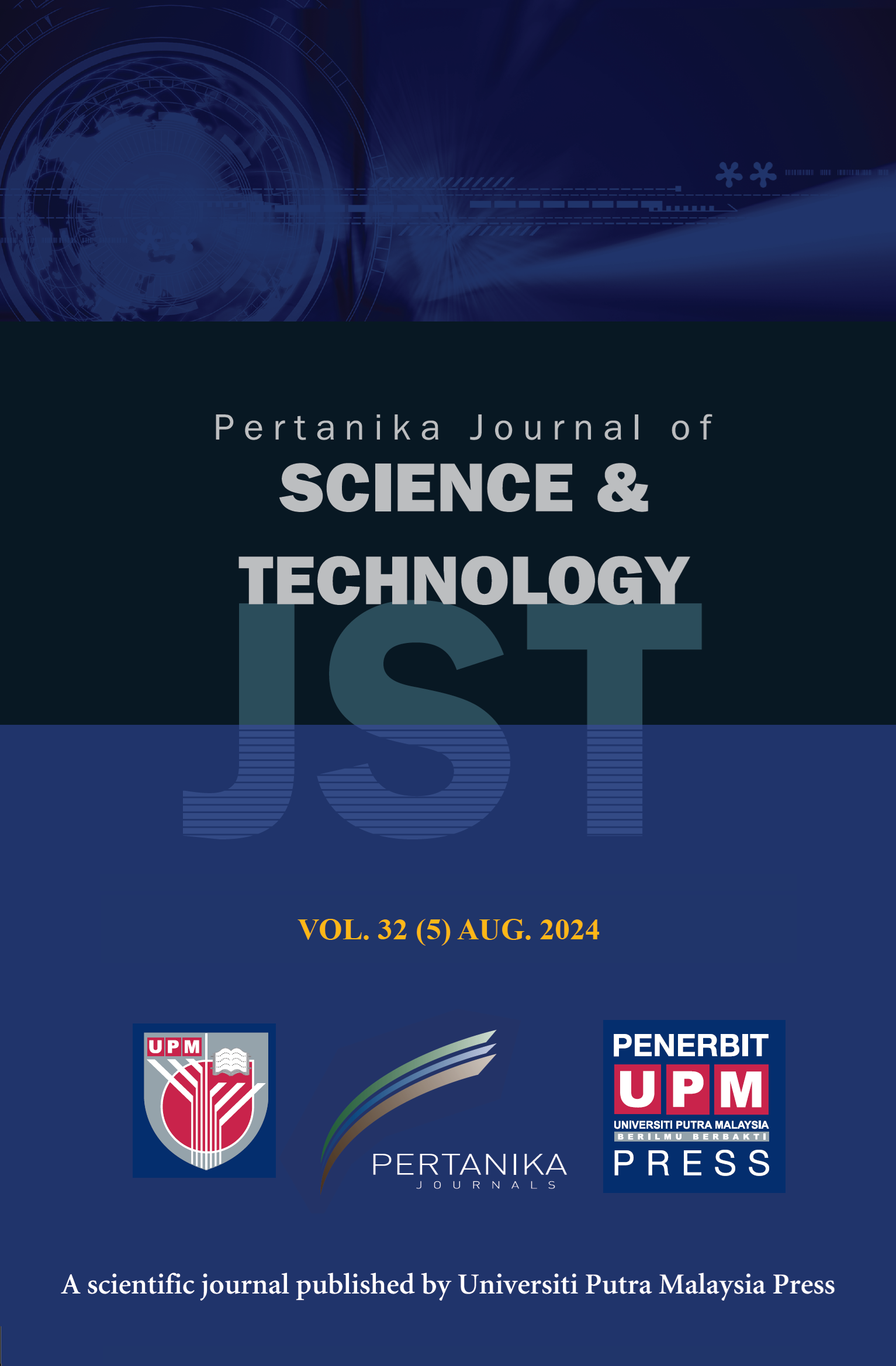PERTANIKA JOURNAL OF SCIENCE AND TECHNOLOGY
e-ISSN 2231-8526
ISSN 0128-7680
Simulation of Solar Charge Controller Module with Current Backflow Protection
Aimi Dalila Azhar, Weng Ho Yew, Akmal Zaini Arsad, Azrul Ghazali, Fazrena Azlee Hamid and Ahmad Wafi Mahmood Zuhdi
Pertanika Journal of Science & Technology, Pre-Press
DOI: https://doi.org/10.47836/pjst.33.2.05
Keywords: Current backflow, cutoff MOSFET, protection circuit, solar charge controller, undervoltage
Published: 2025-02-21
Solar energy is popular worldwide due to the escalating demand for renewable and clean energy solutions. The inherent low power conversion efficiency of solar panels highlights the indispensable role of a solar charge controller in optimizing the power transfers from the solar panel to a storage battery. Traditional buck converters are marred by considerable power losses due to freewheeling diodes, thus making a synchronous buck converter, which necessitates protection against the reverse current from the battery to the solar panel. During low irradiation, the solar panel voltage typically falls below the battery voltage, creating the potential for reverse current flow, which may cause damage to other system components. This study proposes an innovative current backflow protection circuit, effectively addressing reverse polarity risks, demonstrated through LTspice simulations. Utilizing an NMOS MOSFET, this circuit disrupts the connection whenever solar panel voltage falls beneath a predefined cutoff value, thereby preventing reverse current damage. The protective mechanism’s efficacy is validated by monitoring the NMOS MOSFET’s drain current, which remains at 0A below the cutoff voltage but transitions to negative values above it, indicating a reverse flow and underscoring the circuit’s reliability in safeguarding solar energy systems.
-
Breyer, C., Bogdanov, D., Khalili, S., & Keiner, D. (2021). Solar photovoltaics in 100% renewable energy systems. In Meyers, R. A. (Ed.), Encyclopedia of Sustainability Science and Technology (pp. 1-30). Springer. https://doi.org/10.1007/978-1-4939-2493-6_1071-1
Deo, A., Maity, A., & Patra, A. (2022). A voltage-emulated peak current controlled buck converter for automotive applications with in-built over-current protection. Microelectronics Journal, 123, Article 105423. https://doi.org/10.1016/J.MEJO.2022.105423
Eraydin, H., & Bakan, A. F. (2020). Efficiency comparison of asynchronous and synchronous buck converter. In 2020 6th International Conference on Electric Power and Energy Conversion Systems (EPECS) (pp. 30-33). IEEE Publishing. https://doi.org/10.1109/ICPERE.2012.6287236
Guo, T., Huang, S., & Wang, X. (2019). Overcurrent protection control design for DC-DC buck converter with disturbances. IEEE Access, 7, 90825–90833. https://doi.org/10.1109/ACCESS.2019.2926985
Gupta, P. P., Kumar, N., & Nangia, U. (2022). Passive cell balancing and battery charge controller with CCCV topology. In 2022 3rd International Conference for Emerging Technology (INCET) (pp. 1-5). IEEE Publishing. https://doi.org/10.1109/INCET54531.2022.9825104
Hammerbauer, J., & Stork, M. (2021). Output overvoltage in DC-DC switching converters in case of sudden unloading. In 2021 International Conference on Applied Electronics (AE) (pp. 1-4). IEEE Publishing. https://doi.org/10.23919/AE51540.2021.9542875
Kumar, P., Sinha, P., Roy, C., & Basu, M. (2018). Design and implementation of solar charge controller for photovoltaic systems. ADBU-Journal of Engineering Technology, 7(1), 1-4.
Kumar, S. S., Panda, A. K., & Ramesh, T. (2015). A ZVT–ZCT PWM synchronous buck converter with a simple passive auxiliary circuit for reduction of losses and efficiency enhancement. Ain Shams Engineering Journal, 6(2), 491–500. https://doi.org/10.1016/J.ASEJ.2014.10.018
Lee, W., Han, D., Morris, C., & Sarlioglu, B. (2015). Minimizing switching losses in high switching frequency GaN-based synchronous buck converter with zero-voltage resonant-transition switching. In 2015 9th International Conference on Power Electronics and ECCE Asia (ICPE-ECCE Asia) (pp. 233-239). IEEE Publishing. https://doi.org/10.1109/ICPE.2015.7167792
Marouchos, C. C. (2006). The buck boost DC to DC converter. In The Switching Function: Analysis of Power Electronic Circuits (pp. 163–174). The Institution of Engineering and Technology. https://doi.org/10.1049/PBCS017E_CH11
Muntaser, A., Ragb, H., & Elwrfalli, I. (2022). DC Microgrid Based on Battery, Photovoltaic, and Fuel Cells; Design and Control. arXiv Preprint. https://doi.org/10.20944/preprints202212.0527.v1
Raghavendra, N. K., & Padmavathi, K. (2018). Solar charge controller for lithium-ion battery. In 2018 IEEE International Conference on Power Electronics, Drives and Energy Systems (PEDES) (pp. 1-5). IEEE Publishing. https://doi.org/10.1109/PEDES.2018.8707743
Rokonuzzaman, M., Shakeri, M., Hamid, F. A., Mishu, M. K., Pasupuleti, J., Rahman, K. S., Tiong, S. K., & Amin, N. (2020). IoT-enabled high efficiency smart solar charge controller with maximum power point tracking - Design, hardware implementation and performance testing. Electronics, 9(8), 1–16. https://doi.org/10.3390/electronics9081267
Wang, L. Y., Zhao, M. L., & Wu, X. B. (2016). A monolithic high-performance buck converter with enhanced current-mode control and advanced protection circuits. IEEE Transactions on Power Electronics, 31(1), 793–805. https://doi.org/10.1109/TPEL.2015.2405093
Wang, N., Hu, R., & Zhu, M. (2019). Methods to Solve Reverse Current Caused Damage in Synchronous Buck Converter (Application Report). Texas Instruments. https://www.ti.com/lit/an/slua962/slua962.pdf?ts=1736996669125&ref_url=https%253A%252F%252Fwww.google.com%252F
Xu, F., Liu, J., & Dong, Z. (2022). Minimum backflow power and ZVS design for dual-active-bridge DC-DC converters. IEEE Transactions on Industrial Electronics, 70(1), 474-484. https://doi.org/10.1109/TIE.2022.3156159
Zomorodi, H., & Nazari, E. (2022). Design and simulation of synchronous buck converter in comparison with regular buck converter. International Journal of Robotics and Control Systems, 2(1), 79–86. https://doi.org/10.31763/ijrcs.v2i1.538
ISSN 0128-7702
e-ISSN 2231-8534
Share this article

